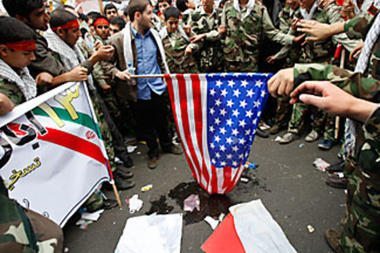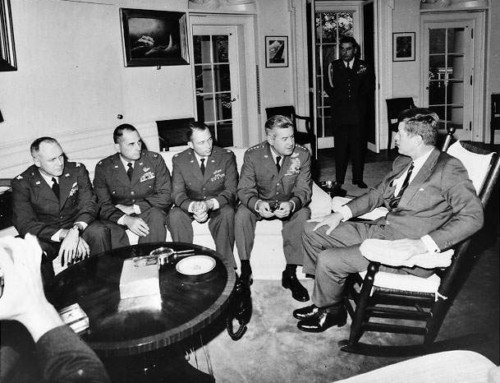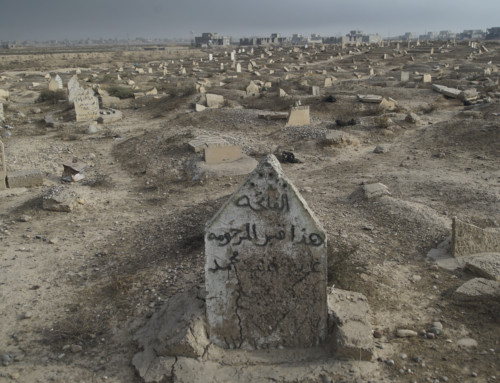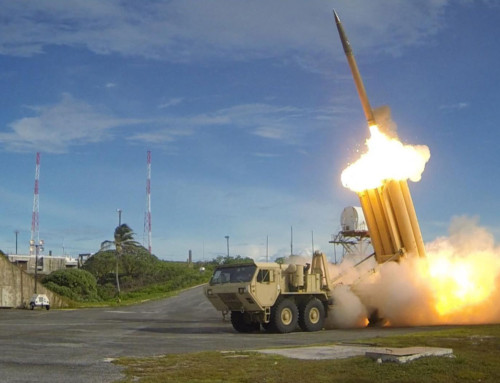 In the same week that the nation watched the Obamacare rollout crash and burn American supremacy in the Middle East continued to implode. Our allies signaled that they had had enough of this president’s relentless propensity to court enemies while snubbing friends. Among this administration’s myriad foreign policy blunders, the Syrian debacle continued to degrade our ability to defend our national interests and influence world events.
In the same week that the nation watched the Obamacare rollout crash and burn American supremacy in the Middle East continued to implode. Our allies signaled that they had had enough of this president’s relentless propensity to court enemies while snubbing friends. Among this administration’s myriad foreign policy blunders, the Syrian debacle continued to degrade our ability to defend our national interests and influence world events.
The Saudi’s Dump Us

Prince Turki al Faisal Source: goo.gl/vsMgrg
Last month Prince Turki al Faisal, former Saudi Ambassador to the US, told the London press, “The current charade of international control over Bashar’s chemical arsenal would be funny if it were no so blatantly perfidious, and designed not only to give Mr. Obama an opportunity to back down but also to help Assad butcher his people.”
This week, the Saudi Intelligence chief, Prince Bandar, decided to limit his ties with the CIA in training Syrian rebels, preferring to work more closely with the Jordanians and the French. It truly is a sad day for America when one of our supposed Middle Eastern allies finds the French socialists more battle ready than are we. Even more importantly, our lack of influence in Syria can have real catastrophic repercussions because it will mean that Saudi’s will not be constrained by us to keep surface-to-air missiles out of the hands the Sunni rebels, their allies. In an increasingly dangerous world, this failure can lead to catastrophes, to terrorists bringing down civilian aircraft as they did with TWA 800 over Long Island in 1996. (Amazingly like Benghazi, the downing of TWA 800 was an act of war carried out by terrorists, using a surface-to-air missile, a couple of months before a presidential election, and covered up by a sitting president)
The Saudi’s have come to learn the consequences of America electing a Marxist president. They have been pressing him even harder than the Israelis for the US to take out the Iranian nuclear sites. But as the Editorial Board of Wall Street Journal puts it, “Now Riyadh is realizing that Mr. Obama’s diplomacy is a journey with no destination, that there are no red lines, and that any foreign adversary can call his bluff.”
American and Iranian Regime Change after the Bombing

American clients in the Middle East Source: http://goo.gl/5h1iKX
As we have witnessed in Egypt, the Egyptian military sided with crowds in the streets and twice removed a head of state in the space of 24 months! So, if this country was confronted with mortal danger and Obama was too paralyzed to act, might the Egyptian model not be operative for next American Revolution 2.0, might not the military step in?
What follows here is an excerpt from my book, “Lessons from Fallen Civilizations.” It is a conjectural look into the future, where the new interim president, appointed by the American military, realizes that although Iran has lost most of its weapon making capacity after the bombing, the regime is still a mortal threat to both Israel and the US.
Operation Free Persia – An Excerpt from Lessons from Fallen Civilizations
…It will be the first time any power has ever attempted to conquer a rogue state armed with nuclear weapons. Yet, he judges the prospect of doing nothing as even more dangerous. In preparation for the launch of Operation Free Persia, the new president and a very small group of his closest advisors have been meeting and communicating in total secrecy with; Iranian/American expatriates former diplomats from the Iranian Foreign Service. Each member of the president’s team of Iranian expatriate advisors is in constant touch with his or her network of resistance leaders poised to begin the fighting inside Iran.
The US Navy has begun to selectively blockade Iranian shipping, by searching ships for prohibited materials destined for Iranian ports. Through intense diplomatic pressure, the US has greatly slowed the regime’s ability to import refined petroleum. All known shipments from North Korea are being interdicted.
The US and European allies have seized and shut down nearly all Iranian front groups. Dubai and the Arab Emirates have frozen many of the Mullahs’ foreign bank accounts. Most US allies have liquidated their Iranian investments.
While the world holds its collective breath, few nations, even in the Middle East, have condemned the US and its allies for their actions against the regime. Meanwhile the Iranian economy is collapsing. Over 50 percent of the population is unemployed. Many of the elite Iranian Revolutionary Guard (IRG) are secretly communicating with Iranian resistance groups inside the country and letting their contacts know that when the fighting begins, they will switch sides. Police protection is collapsing. There is widespread looting.
The new president’s plan to aid the Iranian revolution is built around the fact that the center of Iran is ringed by disaffected, mostly Sunni, minority provinces: the Kurds in the northwest, the Azeri’s in the north, the Arabs in the southwest province of Khuzestan, and the Baluchis in the southeast. For many months, rogue elements within the US Intelligence and Special Forces, based in Afghanistan to the east, in Iraq to the west, and even from Turkmenistan to the north, have been supplying revolutionary commando brigades with ultra secure satellite phones, weapons, ammunition, money, and rations.
In turn they are mounting incessant attacks on government targets and escaping back across the border. Iranian Kurds entering from the northwest have launched the most attacks. But in the lawless southeast province of Baluchistan, the attacks have been the most lethal and dramatic. They even attacked Iranian President’s motorcade, killing one of his bodyguards, and waged an all-out gun battle with Iranian security forces in the center of the Baluchi capital city of Zahedan.

Iran’s new Revolutionaries Source: http://goo.gl/PCG4UG
Twenty-three-year-old Abdol Maleck Rigi has emerged as the commander of the Baluchi revolutionaries. The CIA arranged for him to be interviewed by Voice of America that was transmitted into Iran in Persian. The program introduced him as the “leader of the Iranian resistance movement.”
One morning, when the new president arrives at the Oval office to meet with his national security advisors, he is handed a report with alarming news from his CIA Director. The Iranian missiles, photographed by satellite as they were loaded onto huge trailers and moved south by military truck transport toward the southern Iranian port of Bandar-e-Abbas, are now missing. Although the new president has greatly improved intelligence gathering operations inside Iran, the administration is still only guessing if the missiles, seen in transit, are nuclear armed and if they will be assembled as part of an impending new EMP attack. At the end of meeting the new President tells his advisors to launch Operation Free Persia the next night.
The plan is to send in units comprised of US armed Iranian commandos who have formed camps inside Turkmenistan, Afghanistan, and Iraq. They will lead fellow Farsi-speaking expatriates, from Europe and US, and join with Special Forces and CIA paramilitary officers disguised as Iranian revolutionaries. The Americans have been ordered not to be taken prisoner under any circumstances—this is a do or die mission.
As the first units cross into the country from the north, east, and west, a signal is sent via secure satellite phones to other teams of commandos and civilian revolutionaries inside Tehran and other key Iranian cities. It is time to attack government installations, fire smuggled rockets into weapons depots, and blow up bridges and key roads leading away from military installations to disrupt troop movements. Additionally, they send out the call to encourage every citizen to join in the revolution and come out into the streets to fight the Basiji (the regime’s thug force) with rocks, bottles, and any other homemade weapons they can fashion. Their call-to-arms is to create chaos, set fires on military and government buildings, disrupt military movements, and overwhelm the regime.
Under the cover of darkness, the first units coming in from the outside, wearing Chinese-made night vision goggles, will attack weapons depots and other military storage facilities where Iranian Revolutionary Guard (IRG) units are billeted in border towns. Before engaging in combat they will attempt to make contact in Farsi and convince the Iranian soldiers to surrender and switch sides. Once those border installations have been taken or neutralized, mobilized units of armored hummers will cross and begin moving a second wave of reinforcements, men and material, inland.
The plan contains numerous layers of contingency plans. The president knows that the Mullahs, seeing the regime in its death throws, may elect to launch their nuclear missiles at Europe, Israel, or even at the East Coast of the United States. For missile defense, the Navy has strategically stationed every available Aegis (ship-based) interceptor vessel in the US arsenal. Roughly half the Aegis ships are in the Eastern Mediterranean to defend Israel and Europe with the balance arrayed in the Atlantic to defend the Eastern Seaboard of the
US. In In the Persian Gulf, a carrier group is ready to engage the Iranians should the regime begin to turn its airpower upon its own citizens. Massive American air and naval powers stand ready to launch several hundred aircraft and cruise missiles at military targets. Bombers with tactical “bunker buster” nuclear weapons are poised to take out hardened underground nuclear weapons centers.
The President’s plan provides the means for the Iranians to conduct the overthrow of their own county in a manner that allows the world to see it as legitimately their revolution. The plan is conceived to prevent the conflict from escalating to include Russia or China, Pakistan, or India. In his final consultations with Pentagon officials regarding the US missile defense systems, he repeatedly asks, “Is the system fail safe?” To which he receives the answer, “We hope so.”

One face of a liberated Iran Source: http://goo.gl/9c1XaC
Four days later, having slept very little, the bleary-eyed new president stands before the television monitors inside the war room in the basement of the White House. Tech-savvy Iranians have posted to YouTube scenes of unimaginable jubilation in the streets of Tehran. He looks up to see choppy footage shot by Iranian hand-helds of just released prisoners streaming out of the notorious Evin prison into the arms of their tearful families.
Next, there is footage of the first NATO troops arriving to aid in securing the military installations. Iranian women are singing and dancing in the streets and there is not a head covering to be seen anywhere in the crowds. The new President’s thoughts turn to President Kennedy on that Sunday morning October 28, 1962, the day Khrushchev agreed to remove the Soviet missiles from Cuba.
On the following day, hundreds of thousands of Iranians return to the streets of Tehran. Singing ancient Persian nationalist hymns, they march solemnly toward the city’s central mosque and watch as it is consumed in flames. Fourteen centuries of Arab/Islamic rule over Persia has come to an end.






